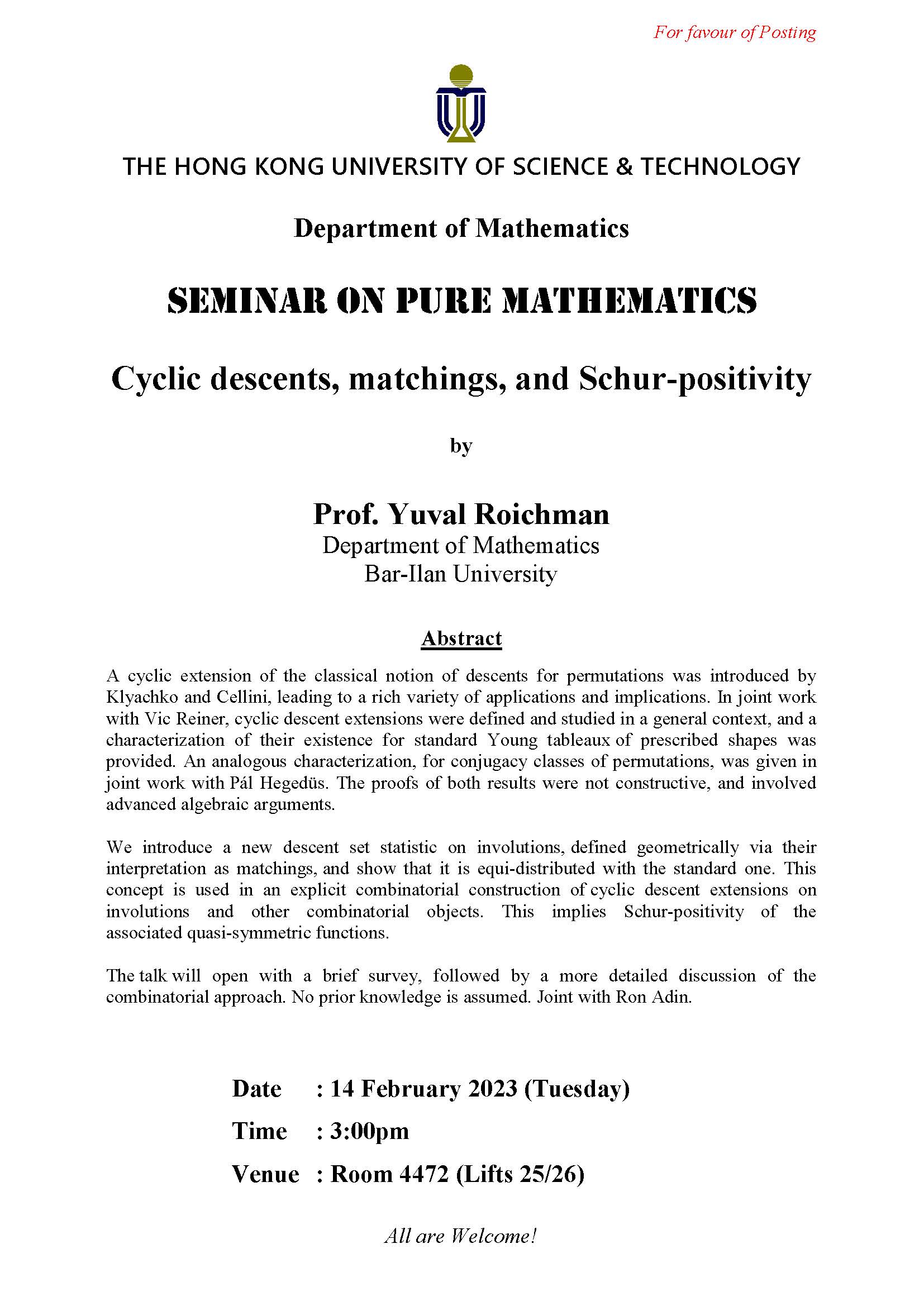A cyclic extension of the classical notion of descents for permutations was introduced by Klyachko and Cellini, leading to a rich variety of applications and implications. In joint work with Vic Reiner, cyclic descent extensions were defined and studied in a general context, and a characterization of their existence for standard Young tableaux of prescribed shapes was provided. An analogous characterization, for conjugacy classes of permutations, was given in joint work with Pál Hegedüs. The proofs of both results were not constructive, and involved advanced algebraic arguments.
We introduce a new descent set statistic on involutions, defined geometrically via their interpretation as matchings, and show that it is equi-distributed with the standard one. This concept is used in an explicit combinatorial construction of cyclic descent extensions on involutions and other combinatorial objects. This implies Schur-positivity of the associated quasi-symmetric functions.
The talk will open with a brief survey, followed by a more detailed discussion of the combinatorial approach. No prior knowledge is assumed. Joint with Ron Adin.

Department of Mathematics, Bar-Ilan University



